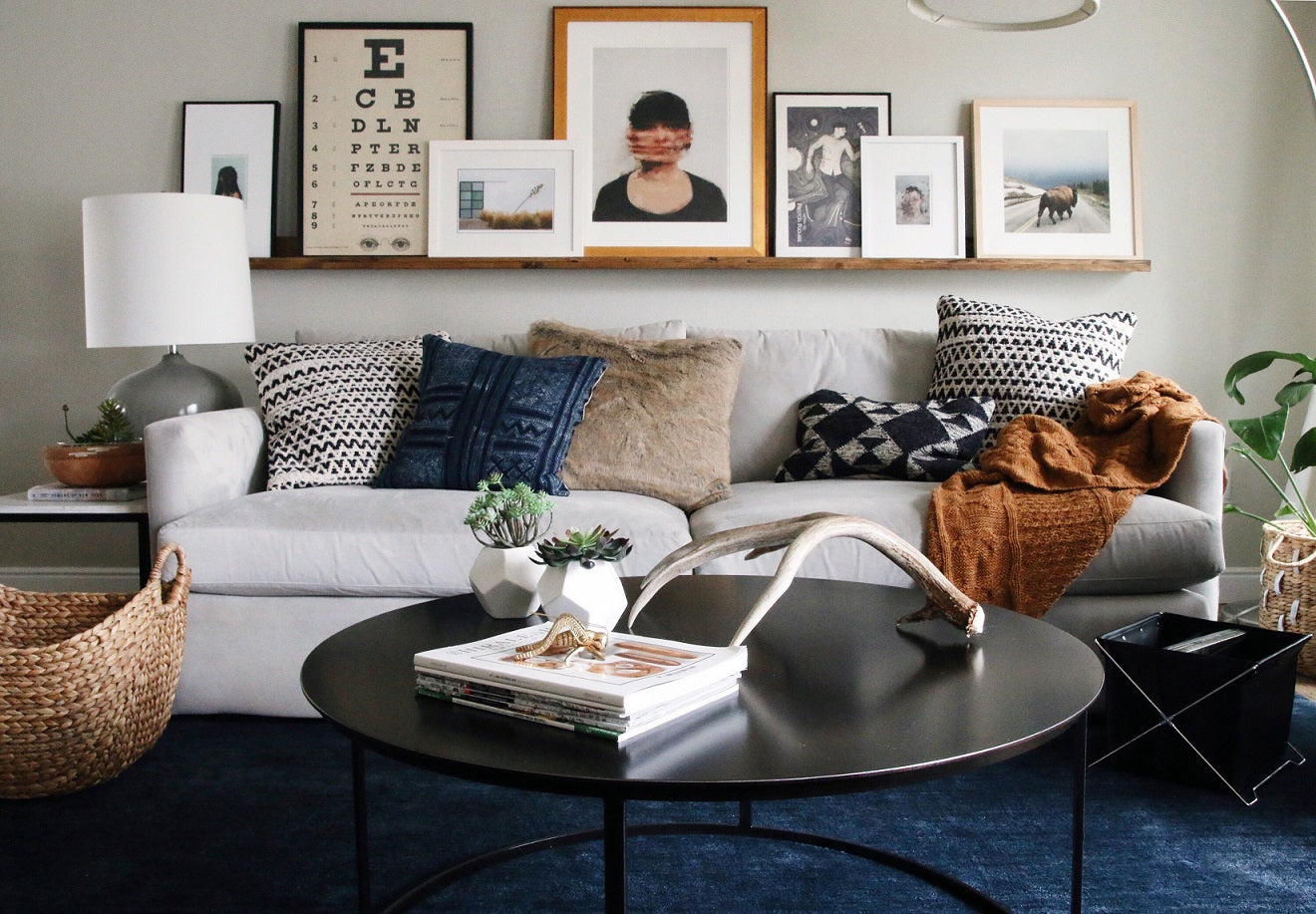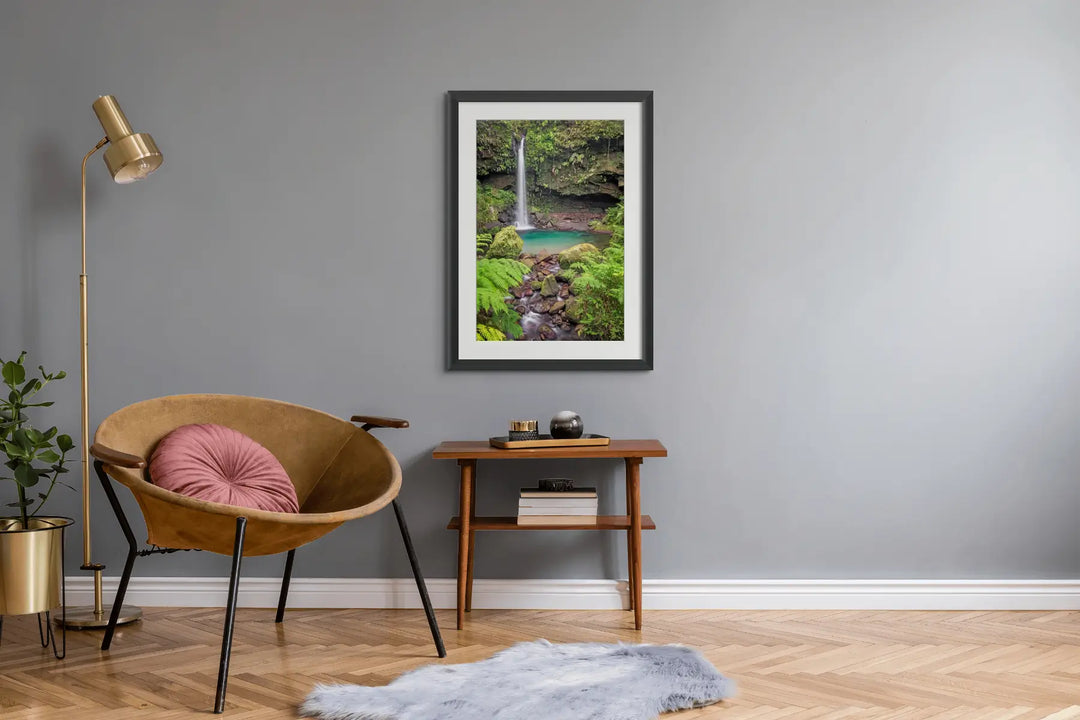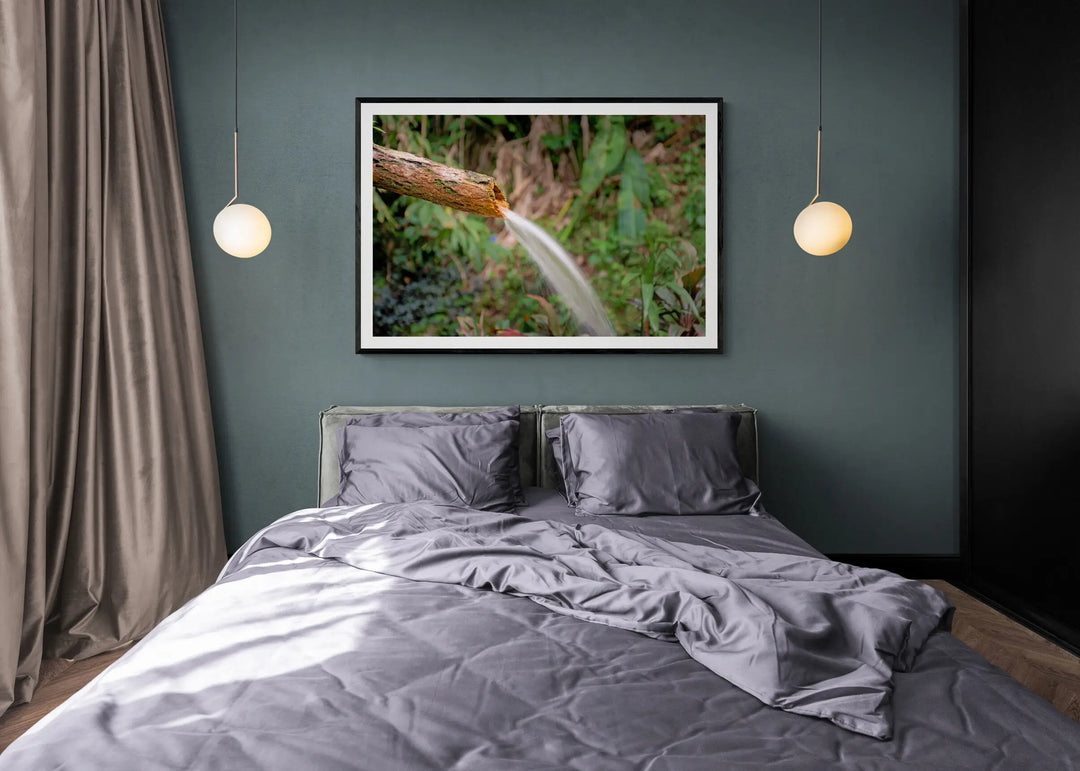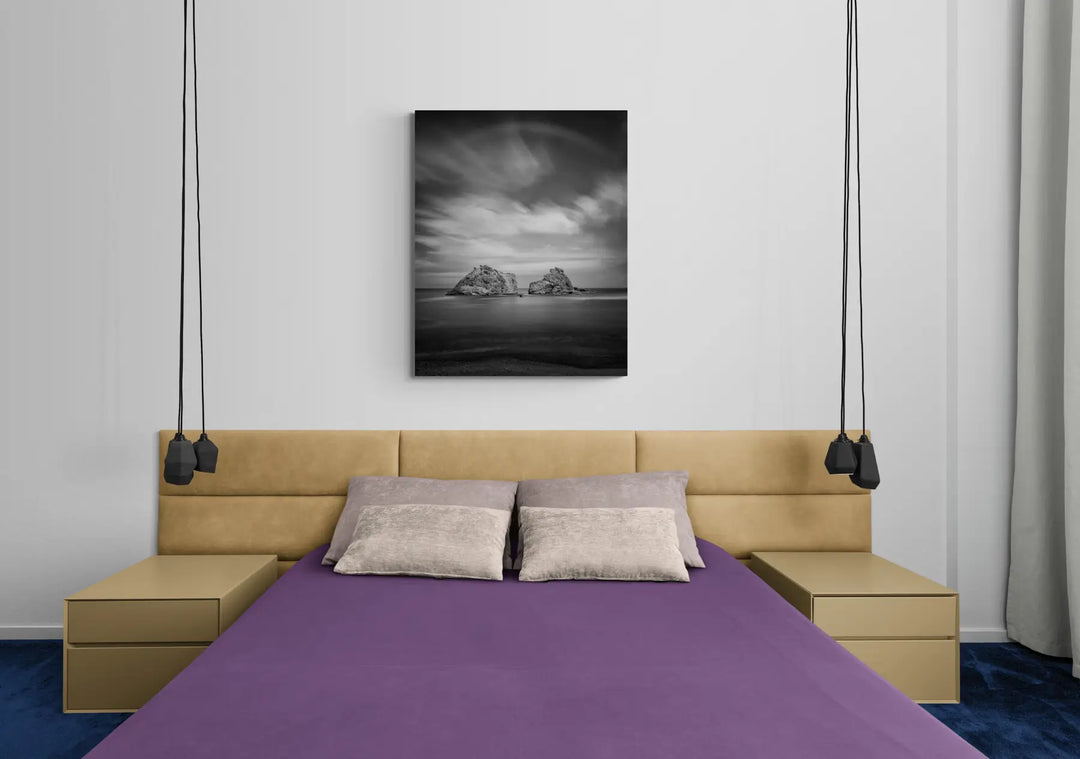I can imagine some readers seeing the headline and thinking: "But what is a gallery wall though??" That's a great question!
A gallery wall is an art-lover's way of displaying their collections on one wall. It's a great way to inject colors or patterns into a room, and it can be a great way to bring life to a room. Most importantly, gallery walls can really tell visitors a whole lot about who you really are.
Related: 10 Good Reasons to Buy Art
Getting started with a gallery wall can be difficult though. Common questions are:
- should I buy new art or use the pieces I already have?
- frame or unframed?
- which wall should I use?
- is there a special design I should use?
- etc...
Several other questions boggle the minds of art owners, and I hope the following tips can help alleviate some of that anxiety.

Photo via - PotteryBarn.com | How to hang a gallery wall
Bonus: Get access to my exclusive Insiders' Newsletter to receive free monthly wallpapers straight to your email, just like the photos on this website!
Getting started
For those lucky enough to have un-hung collections of art, beginning your gallery wall will involve laying artworks on the floor to see how they might fit together. With all your puzzle pieces laid before you, you have the advantage of visualizing your options before tapping in a single nail.
But for most of us who are slowly developing our collections, our gallery wall will come together piece by piece. Consider giving yourself some collecting guidelines.
Themes
It's a good idea to adhere to a theme when building your wall. The good thing is that your theme can be anything - type of art (landscapes, portraits, etc), color (monochrome or black and white). With these two very broad categories in mind, you could create dozens of themes.
There aren’t any hard and fast rules here, and the most important thing is that you love each and every artwork—if you stay true to your style, chances are your wall will come together organically.
Framing
Designers suggest that for a cleaner, more streamlined wall, you should use thin frames in just a couple different finishes. Varying sizes on your mat boards can add variety to the overall look.
Tip: You can lay unframed paintings and framed photographs and prints side by side without having either one feel out of place.
If you’re going for a more old-timey feel, with portraits and landscapes, vintage and ornate gold frames can look great—but since some will probably be quite thick, don't crowd the thick frames together but instead have them dispersed throughout the cluster.
Putting them up
Now that you have pieces that you like, where do you hang them, and how?? Here are a few tips.
The wall
Do you have a small or irregular wall? In this case, you may consider filling the entire wall with artwork, floor to ceiling, spanning the entire width. This doesn’t necessarily mean cramming it with artworks, however—you can easily space out the arrangement to fill the space in a balanced way with out blowing all your cash on a slew of works.

Photo via - Artspace.com
On the other hand, when working with a large wall, like one found in a loft space, large living room, or open floor plan, hanging art can create a focal point, concentrating interest in one particular area to help guide your eye around the room.
So rather than fill the entire wall like you might with a small or irregular space, hang your cluster above a couch in a living area or a headboard in a bedroom. It tends to look best when the artworks on the edge hang just beyond the edge of the couch or bed frame (think 6 to 12 inches above).
Composition and design
Here are a few easy gallery wall styles, one of which is sure to fit the space you have in mind - not to mention your personal style.
- Grid - use 6 9 or 12 identically sized artworks. This works perfectly if you want to precisely fill the space above a couch, headboard, or dining room table. You can think of picking one classic frame style for a sleek, uniform look and considering a theme for your grid, such as travel photos, wedding photos, or art prints.
- Column - a vertically stacked arrangement of 3 to 6 pieces. This design is great if you have a narrow wall next to a door or window. The vertical gallery wall works wonders in tight spaces. Try mixing up frame styles, mixing metals, and varying the frame sizes to add visual interest.
- Salon - a floor to ceiling arrangement of pieces. Do you have an alcove or nook you’d like to fill? This arrangement is perfect for it.
- Ledge - a grouping of 3 to 5 framed pieces leaned against one another on a shallow wall shelf. This option is great if you'd like to change your decor often. Use different sized artwork to keep the arrangement multi-dimensional.
- Classic - a group of 5 to 10 pieces that are arranged organically. There isn't much to say about this design - go crazy if you're starting fresh and know exactly the space you'd like to fill.

Photo via - ArtSpace.com | An example of the Ledge design
The nice thing about all of these arrangements? They can grow and change over time. In a grid or column gallery wall, that means adding a new row or piece respectively. In a salon style or classic gallery wall, you can add pieces as you find them.
Remember, nothing is written in concrete. Have fun with the choosing of artwork and styling of your gallery wall!








Leave a comment